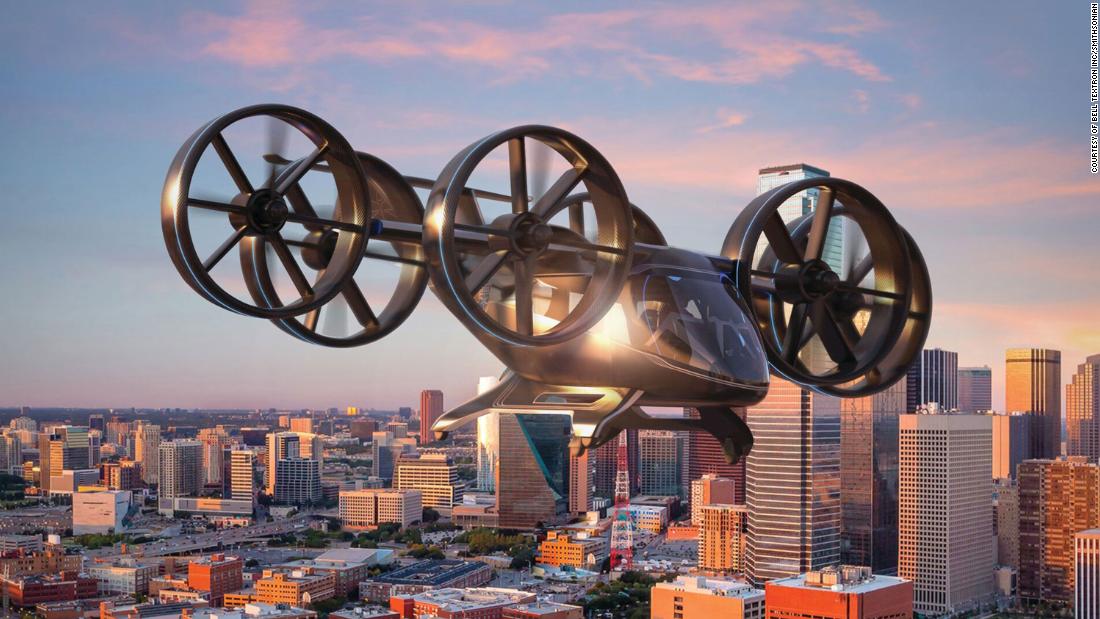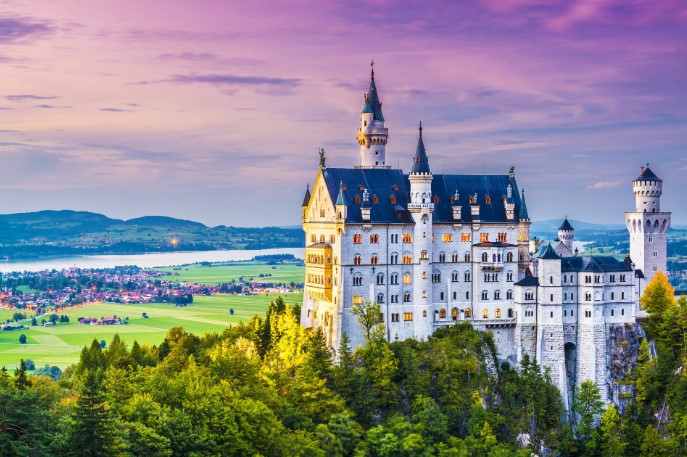Flying cars and floating cities — these 8 radical designs predict our imminent future

Speculations about the future are often bleak, but for its 175th anniversary, the Smithsonian Institution in Washington DC is presenting a grand vision of how the world could radically change through a blockbuster exhibition of technology, design and art. Housed in the Art + Industries Building (AIB), the “Futures” show will fill 32,000 square feet of space with a combination of real projects currently in the works, design proposals from the present and past, and prescient artistic concepts. Rachel Goslins, director of Smithsonian AIB, calls the show “a contemporary World’s Fair of ideas.”
“I think it’s safe to say it’s the only exhibition in history where you can play a video game with your eyes, talk to an emotional robot, visit a deli from the future and do your laundry,” said Goslins.
Smithsonian is the largest network of museums, education and research centers in the world, and the show’s curator Ashley Molese points our that the AIB has debuted many history-making objects on public display for the first time, including the lightbulb, the telephone and the Apollo spacecraft rockets.
Now, they hope to continue their legacy of innovation, she explains. “We have so much help these days imagining what could go wrong in the future,” she said. “But we also need help imagining what could go right.” Here are eight standout concepts and objects from the show.
An electric taxi takes flight
A city floats on the water

Oceanix City Credit: Courtesy CEANIX/BIG-Bjarke Ingels Group/Smithsonian
With urban populations exploding, the sprawl may eventually move from land to sea. That’s the idea behind Bjarke Ingels’ ambitious concept for a floating city, which the Danish architect presented with artist Olaffur Eliasson and the company Oceanix at the UN two years ago. The Bjake Ingels Group (BIG) has become famous for their eye-catching, sustainable, modern designs around Denmark and beyond, and is currently underway on building Google’s new campus in London. But the idea for “Oceanix City” is on a grand scale. The hexagonal, modular plan of the proposed ocean metropolis claims to be entirely adaptable based on a city’s needs, while the infrastructure is designed to be sustainable and natural disaster-proof.
A new way to form a family

(Im)Possible Baby Credit: Courtesy Ai Hasegawa/Smithsonian
A lightning-fast mode of transportation

Pegasus vehicle Credit: Courtesy Virgin Hyperloop/Smithsonian
A working hyperloop in the US has been teased for around a decade, and with Virgin completing its first human trial last November, the futuristic travel option finally seems within reach. A hyperloop — a vacuum tube for land travel that reaches flight speeds — has been long imagined in science-fiction but was propelled forward by Tesla and SpaceX CEO Elon Musk and Silicon Valley investor Shervin Pishevar in 2012, with Virgin Group founder Richard Branson coming to the table in 2017. The Virgin Hyperloop Pegasus, which will be on display at “Futures,” is a high-speed pod designed to travel up to 670 miles per hour, intended to connect major cities by minutes instead of hours.
An eco-conscious final resting place

Capsula Mundi Credit: Courtesy Vincenzo Monzino/Smithsonian
When you die, become a tree — that’s what the Italian design team behind the concept “Capsula Mundi” is proposing. Raoul Pretzel and Anna Citelli’s concept for an egg-shaped biodegradable urn topped with a new tree has circulated on the internet since they first introduced it in 2017. While it is still coming to market four years later, the concept for eco-friendly urn has been exhibited around the world and will make a stop at “Futures.”
A new source of drinking water

Water Harvester Credit: Courtesy Waha, Inc/Smithsonian
An AI farm rover

Mineral Rover Credit: Courtesy of X, the Moonshot Factory (a Division of Google LLC)/Smithsonian
A capital city returns to the wild

ReWildAR Summer Visualization Credit: Courtesy of Tamiko Thiel/Smithsonian
What if Washington DC became a flourishing wild ecosystem again? That question is the basis for an AR project by artist Tamiko Thiel, who has transformed one of the exhibition halls into an idyllic wildflower habitat. Thiel, who contributed design to the first commercial AI supercomputer 35 years ago, worked with Smithsonian horticulture experts to visualize a radically greener future that attendees can experience through an augmented reality overlay.
Top image: The Bell Nexus Air Taxi



/cloudfront-us-east-1.images.arcpublishing.com/gray/KOE2KJ2UTNBUFO5ZFB2BJHRTCM.JPG)




